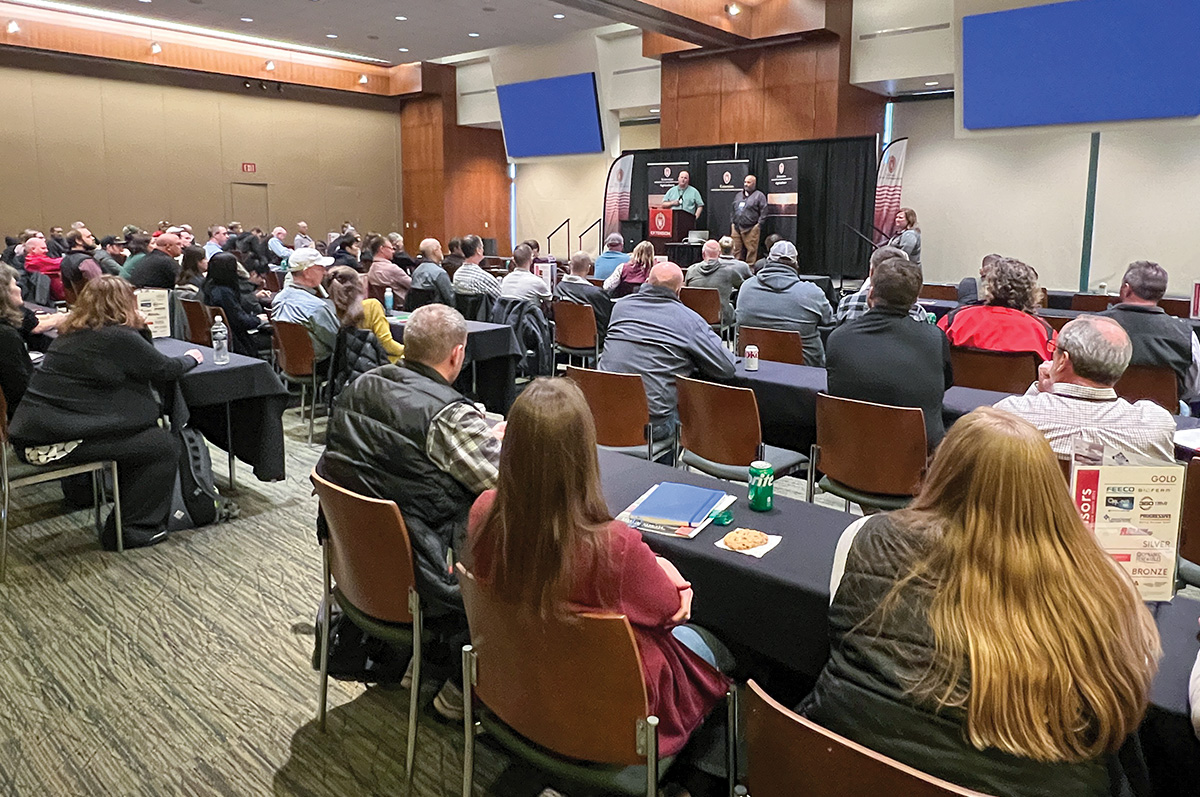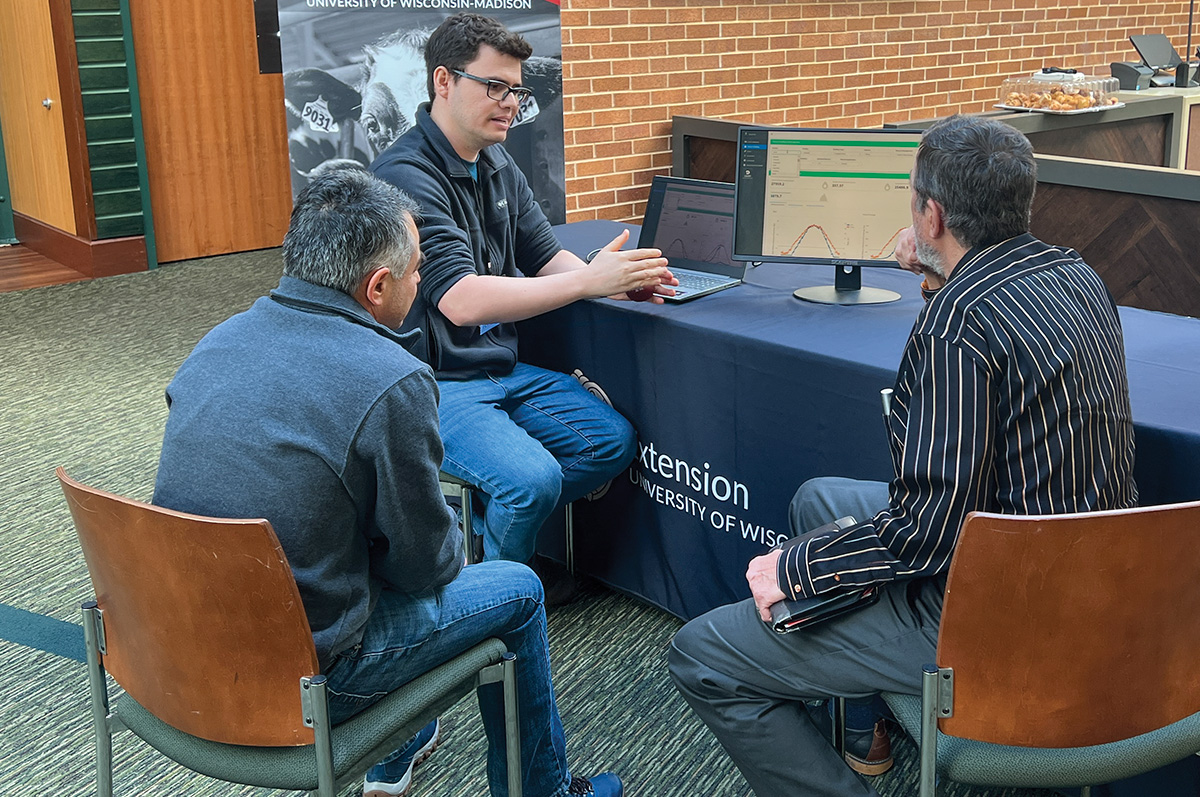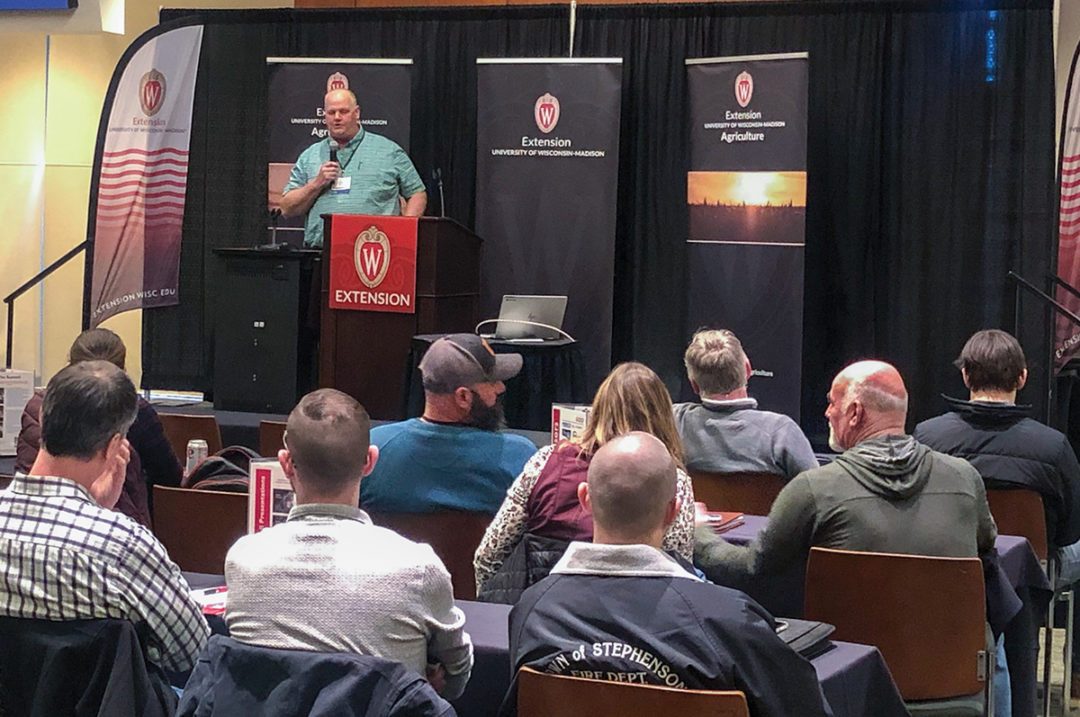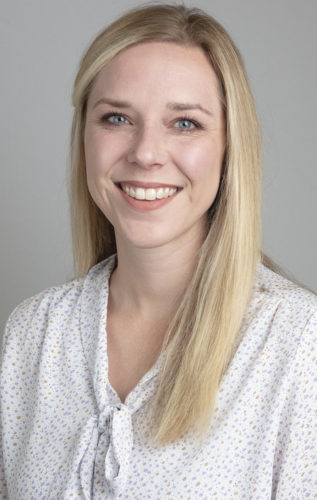After a several-year hiatus of an in-person Midwest Manure Summit due to COVID-19 restrictions on community gatherings, the regional educational event returned with an impressive lineup. Producers, industry professionals and extension educators discussed manure management, new technologies and on-the-horizon opportunities at the biennial event on Feb. 28 at Lambeau Field in Green Bay, Wisconsin.
The day began with a glimpse into the planning and construction of Wisconsin’s largest digester project, BC Organics in Greenleaf, Wisconsin. It was followed by a keynote address from the USDA’s Sheri Spiegal and the organization’s efforts with manuresheds. After a full day of educational seminars, the summit ended with a presentation by Wisconsin dairy producer Doug Grotegut and Tony Culver, of Calumet Renewable Energy. Grotegut spoke of his farm’s experience in incorporating biomass energy production.

Attendees listen as dairy producer Doug Grotegut and Tony Culver, of Calumet Renewable Energy, speak about Grotegut's biogas energy production on his farm. Photo courtesy of Midwest Manure Summit planning committee.
Here are a couple of neat things happening in the manure space that are of particular interest to the dairy industry:
1. Estimating carbon balance in livestock systems
Determining a farm’s carbon balance is a snapshot of what greenhouse gas emissions and carbon storage look like at the farm scale. From there, producers can establish a baseline to make decisions that are effective and achievable for their farm business in addressing environmental concerns.
“There are a lot of solutions for a lot of farm situations,” said Alison Duff, a research ecologist with the USDA’s Agricultural Research Service (ARS). “It depends on what the producer’s goals are and what the processors or buyers are interested in. What we’re really looking for when we do these system analyses are the win-win opportunities.”
Duff and her team are developing a decision-making tool that addresses two of producers’ greatest concerns – guidance for making decisions with best practices in mind and the ability to make year-to-year decisions.
The tool is called the Ruminant Farm System Model, RuFaS for short.
“RuFaS is meant to be a footprinting tool that will help producers plan and determine best management practices for their goals, whether that’s profitability or sustainability,” Duff said.
2. Upgrading biogas to diesel fuel – then jet fuel
For the past several years, a small pilot plant at the University of Wisconsin-Oshkosh’s dairy converted manure into biogas and then fuel using a series of chemical reactors. The partnership between the college and the Agra Energy corporation used the company’s gas-to-liquid technology (GTL) to create a liquid fuel source that meets diesel fuel specifications.

Victor Cabrera and Tadeu da Silva speak with a dairy producer about their DairyPrint model tool at the Midwest Manure Summit Feb. 28 in Green Bay, Wisconsin. Photo courtesy of Midwest Manure Summit planning committee.
GTL technology is a series of three chemical reactors that, in short, converts methane in the biogas to hydrogen and carbon monoxide, then converts those products to hydrocarbons and finally stabilizes the fuel to a saleable product.
Now, a 6,000-cow dairy farm in eastern Wisconsin is set to be the first commercial site to use this technology for fuel production with Agra Energy.
“Right now, we’re set to make diesel fuel,” said Andrew Lucero, chief scientist at Agra Energy. “Our long-term goal is to commercialize jet fuel because we believe there is massive opportunity there. The technology to make jet fuel is not all that different [from] diesel fuel, but it’s a bit more complicated to commercialize the product and meet the standards of production.”





